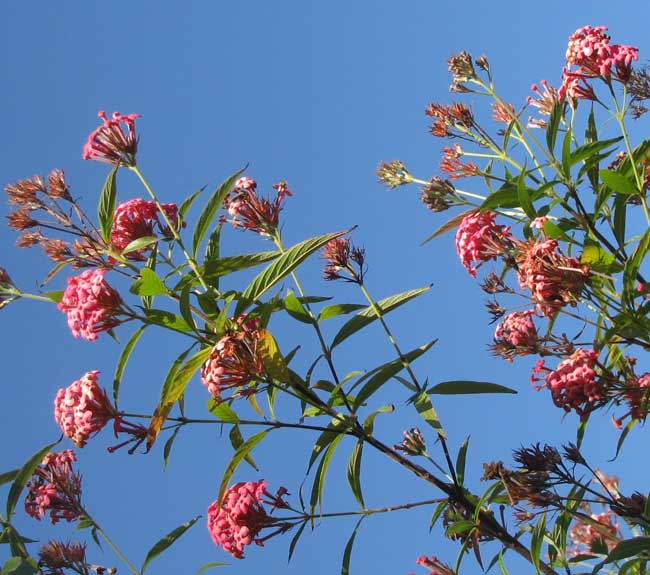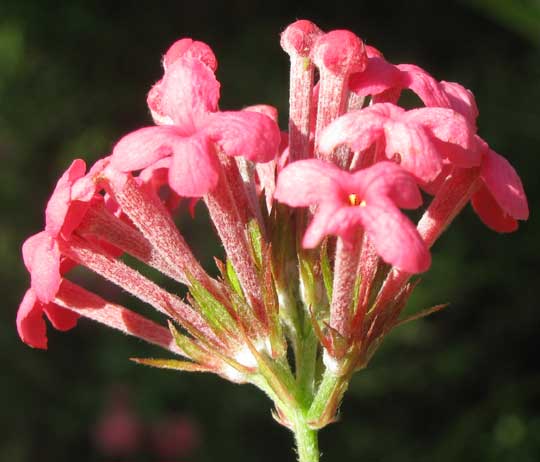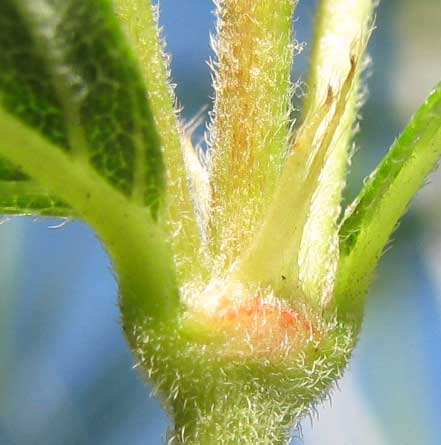Excerpts from Jim Conrad's
Naturalist Newsletter

from the October 31, 2010 Newsletter issued from Hacienda Chichen Resort beside Chichén Itzá Ruins, central Yucatán, MÉXICO; limestone bedrock, elevation ~39m (~128ft), ~N18.52°, ~W95.15°
PANAMA ROSE
Once again while biking Pisté's backstreets keeping my eyes peeled for interesting plants something new and gorgeous came along, its branches cascading over a stone wall. You can see a limb of the much-branched, ten-ft-tall bush all aglow with pink flower clusters above. A close-up of a single flowering head is shown below:

In the tropics there's a very commonly grown bush with similar opposite leaves and clusters of red flowers with four petals flaring from atop slender tubes, the Crimson Ixora, which we've met before, and you can see at www.backyardnature.net/q/ixora.htm.
Our new thing clearly is different, but the similarities at once had me guessing that the two species were members of the same family -- the huge, mainly tropical Coffee or Gardenia Family, the Rubiaceae. When you suspect a plant of belonging to that family the first thing you do is to check if conspicuous stipules connect petiole bases at stem nodes where leaves arise. You can see what I saw there below:

In that picture's center, can you see the yellowish appendage that is slenderly triangular, but with a deep cleft at its top? That's the stipule and it's arising from a "stipular line" connecting the opposite leaves' petiole bases. To firm up the family ID I confirmed that the flowers had " inferior ovaries" -- the corollas arising from atop the ovary, not with the ovaries nestled inside the corolla's cuplike base -- and indeed they were inferior. So: Rubiaceae.
Simply by using the Google Image Search feature on the keywords "Rubiaceae tropical red," very quickly a selection of thumbnail pictures popped up matching what I'd found. It was the Panama Rose, RONDELETIA LEUCOPHYLLA. Of course northern roses are unrelated.
Panama Rose is native Mexican, though not native to the Yucatán. It's distributed from Mexico to Panama. The flower is designed so pollinators can cling to the spreading lobes as they insert their slender bills or proboscises into the corolla tube, probing for nectar at the tube's base. From that you can guess that Panama Rose is a favorite of hummingbirds and butterflies.